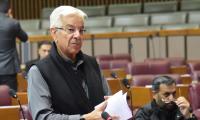Today, when media is passing through very turbulent times, where media houses are being closed, journalists are laid off, and newspaper workers are fighting for their daily bread and butter, many publications are curtailed, and direct or indirect restrictions and bans are put on the freedom of press, we are bitterly missing the pioneer of journalism Mir Khalil-ur-Rahman. How MKR started from the scratch and through sheer hard work, intelligence and farsightedness, he laid the foundation of the biggest media empire of Pakistan. Jang at that time was getting advertisements from major advertisement companies of India, and Jang could be found at every street, or with newsagent, newspaper seller and the footprints of the senior journalists could be found on the footpaths of the whole city at that time and even today. The journey that was started in Delhi in 1944 took a new start in the newly created country Pakistan from its largest metropolitan city of Karachi in 1947. Jang took its birth from a small shop-like office in Karachi and now it has expanded not only in different cities of Pakistan, but in different cities of Britain and the USA. The lamp of knowledge which MKR lighted in India is now spreading its light around the world.
Being a journalist, I have the privilege to work with this king of Urdu Journalism very closely on prominent positions from 1967 till his last days of life. We learned the art of living from MKR even during the most trying times. We together saw good times as well as when there were restrictions on us. My journalistic journey also saw some of the most historic moments in the field of journalism, when the Pakistani press was put under various experimentations. The Press and Publication Ordinance of 1964 was considered to be the blackest law in the history of media, under which publishing a newspaper or magazine was a Herculean task. We also faced that bad time and then Press advice. Throughout the day, reporters would chase the news, do research, contact different sources, make detailed news and give it to the editor happily with the hope that their comprehensive and detailed news will be printed in the next day’s newspaper and will be liked by newspaper readers. But suddenly in the night a Press advice would come saying the newspaper can only publish the news issued by the Press Information Department. And that exclusive story of the reporter would never see the light of the day. This Press advice was the worst kind of ban for newspapers.
After that, a horrific era of pre-print censorship ensued. I was an ordinary reporter but the way advisor used to keep an eye on us, the repression that our hearts and minds would go through at that time, was only known to us but today one can easily understand what the owner of a newspaper empire would have gone through at that time. No one can understand the type and number of calls a newspaper editor had to attend from the so-called elected army dictator, till late night. And then how Mir Khalil-ur-Rahman used to instruct and advise his editors and senior journalists and teach them to face the challenges of time, also makes a great learning for people of that era. On such occasions, when we looked into his eyes, we would only find sadness there but we never found him upset or tormented.
Mir Khalil-ur-Rahman was a kind and generous family head like a shady tree for his fellows, co-workers and friends. I always saw Mir Sahib as a true friend and sympathizer who would always share my pain. Every writer has a rebellious nature in their youth years. Those journalists, who enter journalism through literature, come with great knowledge and learning, and are very excited to write and speak the truth. But there was never a time in the history of Pakistan when there was complete freedom on writing and speaking truth.
Daily Jang had become the voice of the hearts of Pakistanis since the 1950s that is why every ruler wanted to control Jang. Government could have done this with love but in our country our rulers never had the ability to approach someone through love. Governments always use tyranny and power to control everyone. In the past, usually a ban on government advertisement was used as a tool against newspapers. There was not a single government in the past when a ban on advertisements for Jang was not used as a punishment to the newspaper. But Mir Sahib never passed the pressure of these punishments by the government towards his employees. The employees would get their salaries on time and their other facilities and perks would also continue.
In the decades of ‘50s, ‘60s, ‘70s and ‘80s, government was the biggest client to give the highest number of advertisements to newspapers. Presently, the government doesn’t have so many commercial institutions under its umbrella and it only releases tender notices and job vacancies. But in those days, maximum income of the newspapers was based on government advertisements only. PIA, all insurance companies, universities, and factories were under the control of the government. We faced these unfavourable conditions in Zulfiqar Ali Bhutto’s era and then in General Zia-ul-Haq’s tenure, as advertisements were banned for our newspapers.
It was a matter of freedom of the press. Despite all these restrictions, Mir Khalil-ur-Rahman never left his newspaper readers unaware of any news. No matter it was a single column or 3-4 lines news, he used to inform his readers about the upcoming restrictions through these small news items which were written very carefully.
There was not a single writer, poet, novelist, or columnist of Pakistan who didn’t grace the opinion pages ie editorial pages of Jang. These veteran writers included Niaz Fatehpuri, Josh Malihabadi, Raees Amrohi, Majid Lahori, Ibrahim Jalees, Shaukat Thanvi, Jamil-ud-Din Aaali, Ibn-e-Inshaa to name a few. As soon as these renowned writers would migrate from India to Pakistan, Jang would request them formally to write columns in the newspaper so that Jang’s readers could be benefited from the thoughts and vision of these big minds. In this way, renowned writers of Urdu literature were seen on Jang’s pages.
Jang didn’t become the largest Urdu newspaper of Pakistan just like this. It was because of the untiring efforts of Mir Khalil-ur-Rahman who burned the midnight oil to make this happen. His struggling days and sleepless nights were witness to his untiring struggle for chasing his vision and dream.
Mir Khalil-ur-Rahman knew fully well that Urdu is the national language of Pakistan, which is read and spoken all over the country. That is why he wanted that his newspaper should be a mirror of the actual Urdu language and he would make it sure that correct language is used in the newspaper.
On the other hand, there were technical challenges as well. The newspaper printing technology was fast changing around the world. As the head of his newspaper, Mir Khalil-ur-Rahman didn’t want that Jang as an organisation lags behind other newspapers in printing technology. From letho printing to off-set printing, from black and white printing to coloured printing, he adopted all these modern printing methods in his own supervision just in time. We also observed that whenever any new machine or equipment in the media industry was introduced anywhere in the world, these were seen for the first time in the office of Mir Khalil-ur-Rahman. Telex was used for a long time in office and then we saw fax machine for the first time on Mir Sahib’s table. New printing machines were imported from Germany, USA and Britain for the printing press of Jang.
The greatest service of Mir Sahib to Urdu was to do the sponsoring of invention of ‘Noori Nastaleeq’ and to start computerized Urdu typing of Jang Lahore. The credit for the invention of computerised calligraphy goes to Ahmed Jamil Mirza who removed the obstacle of manual Urdu typing which was hindering the development of Urdu language. After great efforts, he added thousands of Urdu words in beautiful calligraphy in the computer. At that time this program was worth more than Rs 60 lakh but nowadays it is available free of cost. For any invention, the first user has to do the supervision of that invention by paying its cost. For his love for Jang and Urdu language, Mir Khalil-ur-Rahman bore the huge cost of this technology. At that time, many owners of Urdu newspapers advised him against this experimentation, terming it unsuccessful, and were not ready to do sponsor this technology. But MKR, as a futurist, could foresee the importance of this invention through his farsighted mind. Today, the Urdu language lovers are obliged to the services of Ahmed Jamil Mirza and Mir Khalil-ur-Rahman that now Urdu like other developed languages of the world can be written on computers. Urdu television, websites, whatsapp, facebook, mobile phone are all familiar to Urdu text because of this invention.
Only historic personalities like Mir Sahib can acknowledge the worth of their language and can do efforts to introduce it to the world by using modern technology.
Today, journalism is passing through very turbulent times, and we are just missing the friend of Urdu language and journalism Mir Khali-ur-Rahman.
May Allah Almighty place his soul in eternal peace and bless him with an exalted place in Jannah. Ameen.
-The writer is a senior journalist and ex-Group Editor of Jang
When inflation skyrocketed due to economic mismanagement, political instability and economy suffered massively
In other words, in possibly welcome change, PTI is playing healthy role inside parliament that of being opposition
New wave of tariffs is shaping and reshaping international trade relations and alignments
Women in politics often find themselves relegated to women's wings, treated as auxiliary units
Connection between gender equality and climate change is particularly evident in food security and water scarcity
In Bangladesh, 73%of children complete lower secondary school, compared to just 51% in Pakistan







